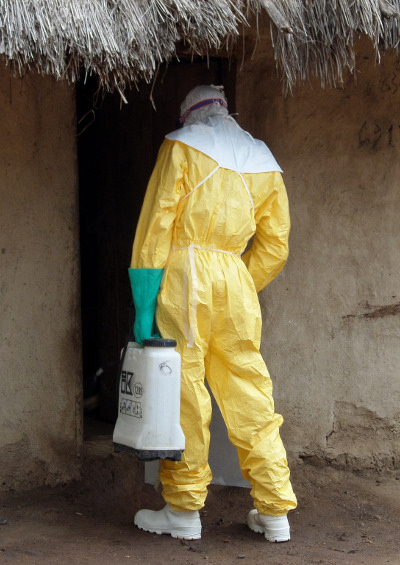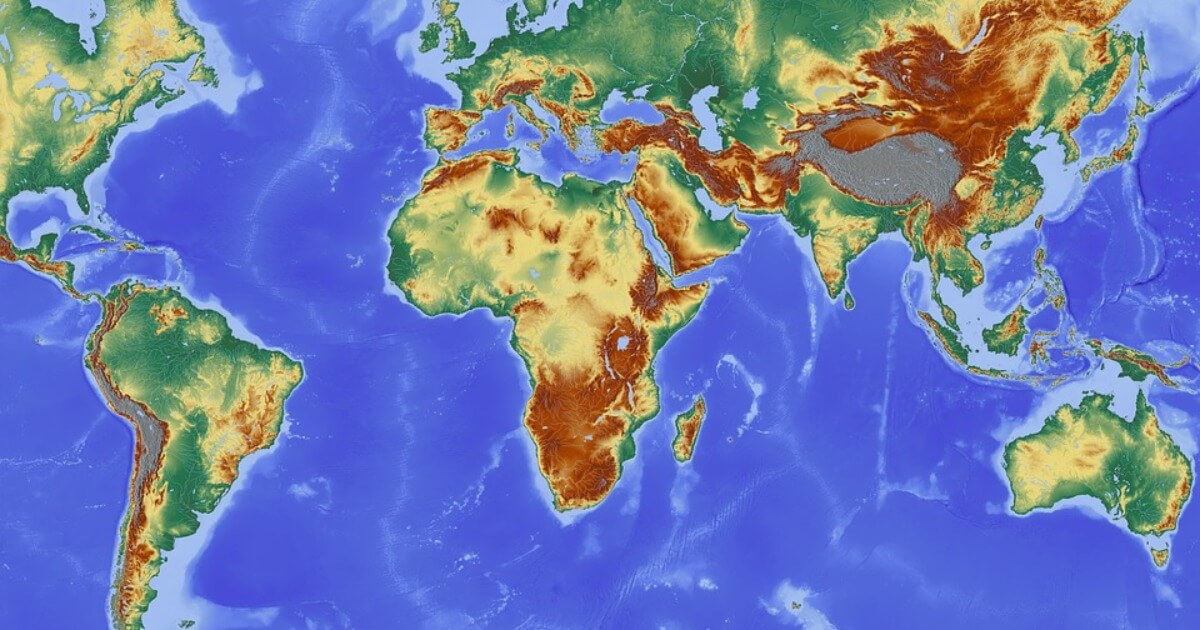What Should Scare Us Most About Ebola?
How wars and climate change affect the health of all the world’s people.
August 4, 2014

Ebola is in itself a scary disease, no doubt. Every time we see an outbreak of a virulent virus, whether in Africa or Asia, there is a tendency in the developed world – by the average American or European – to start thinking, “What a scary place. Let’s just wall the affected countries off and forget about them. Let’s hope that we don’t get this virus.”
It is natural for people to think of their own self-interests and their own families. However, it is also in everyone’s long-term interest to understand the situation of the affected countries, in the current case Liberia, Sierra Leone and Guinea, and to react intelligently.
The leaders of both Liberia and Sierra Leone have imposed military support for quarantine and declared states of emergency in their countries. They also cancelled their trips to the U.S.-Africa Summit called by President Obama at the White House in Washington, D.C.
To understand the depth of the problem, it is very important to know some basic facts about the affected countries: First, the average adult illiteracy rate is 50%. In the current news context, functional illiteracy has a very real consequence. It means the inability to read any material that describes what a virus is and what to do about it – why, for instance, it is important to cooperate with health workers.
In the case of Ebola, we are confronted with cultural beliefs in the affected countries that, when a disease hits a given family, it is because their ancestors committed some sin against someone else. As a result, evil spirits have now been leveled against those who are sick.
This underscores the life-threatening effects of endless circles of retribution and revenge for deeds supposedly committed by someone against someone else.
Add to this folk “wisdom” that these populations have just come out of heinous civil wars, where evil deeds were indeed committed – and touched almost every family during the course of violence from 1985 to 2003
A real culture clash
With this as backdrop, put yourself in the shoes of the health officials and workers trying to bring the crisis under control. Usually hailing from abroad, these outsiders are trying to say to people, “There’s a virus. And this virus causes this disease. We are outsiders dressed in space suits — and we don’t look like you, but you should believe us.” Meanwhile, the average person does not even have a concept of what a virus is.
A key problem in battling this outbreak is the resistance of the general population to measures that could bring the epidemic under control, even though these measures worked in previous outbreaks, including the 1995 one in Zaire that I was in.
These basic measures involve steps that scare populations, such as removing the ill from the care of their family and placing them into quarantine. Or to deny public burials, so that nobody in the general population has physical contact with a cadaver.
Why attacks on health workers?
But we are not just seeing massive resistance to public health efforts. There are even attacks on health workers. Why? Because these countries in recent time have experienced the most brutal civil wars and the most heinous atrocities of human rights violations in modern history.
Charles Taylor, for instance, the former leader of Liberia, was one of the few convicted war criminals in modern time. Taylor’s counterpart in Sierra Leone died of a heart attack when he was facing his own trial for war crimes.
The horrible atrocities that almost every family has witnessed first hand were committed against them by rival militias, by governments or by one group of invading child soldiers after another.
Little surprise then that nobody trusts anybody and that there is no sense of confidence in either the governments or the health workers.
To date, about 60 health workers have died, the majority of them Red Cross workers who perform the heroic duty of trying to remove ailing individuals from their families in villages and to bring them into quarantined facilities. They have faced attacks and resistance.
In addition to two American infected physicians who are fighting for their lives, the top physician from Uganda who offered his services, and the top physician from Sierra Leone have both passed away due to Ebola just recently.
Is Nigeria next?
The real flashpoint – and the real danger point politically – is whether Ebola starts spreading inside Nigeria. While several hundred miles from the border of Liberia, people do travel.

Nigeria is the big kahuna of the African continent. It is the most populous country, a major oil producer and Africa’s biggest economic powerhouse. The country has two major international airports and a highly mobile population that travels all over the world.
Whereas Sierra Leone, Liberia and Guinea are very poor societies where the average person has never traveled anywhere beyond walking distance, Nigeria is another matter altogether.
What further complicates matters in Nigeria is that Boko Haram has control of the northern provinces of the country. The Islamist movement of northern Nigeria in the past has opposed polio vaccination and other health interventions in the Muslim population.
Nigeria is also facing a national election and the continued disgrace of 300 missing girls kidnapped by Boko Haram. That’s a powder keg.
The discussion at the table of the U.S.-Africa summit is likely to be about how to contain the epidemic and how to isolate the affected countries of Sierra Leone, Liberia and Guinea, so that Nigeria and Senegal (another economic powerhouse in the region) do not find themselves exposed to a major epidemic.
Safety measure — or creating pariahs?
The danger of imposing such isolation is that the affected countries could become pariahs in the eyes of other nations. They could end up facing the same stigma the average HIV patient experienced in the United States in the 1980s.
Another complicating factor is that the average spending on health care per person in these countries, according to the World Bank, ranges from a high of $18 per year to a low of $7 per year – mind you, on all health services combined.
With regard to outside organizations, the leading one is the World Health Organization. Unfortunately, it has had to deal with its budget being slashed in recent years. As a result, it laid off 20% of total personnel and its disease response capacity has been slashed, too.
Rather than having an appropriate response capacity, the WHO goes around begging for individuals and governments – like the U.S. government – to help it respond to crises.
Never mind that the U.S.’s own Centers for Disease Control has also seen budget cuts for international response capacity, as well as for pandemic response and surveillance. In short, the world is less prepared to intervene in an effective manner than 10 years ago, when it comes to major responders.
Climate change as a factor
There is another important dimension to get our collective heads around in order to look at this epidemic in the appropriate manner from a long-term perspective. It relates to Ebola’s transmission mechanism — and the big question of why this is happening right now.
There is a long list of relatively newly recognized diseases, even though these viruses have been around for a long time. The list only starts with Ebola and includes Marburg, Nipah, Lyssavirus, MERS and SARS.
If we look at the outbreaks of new human diseases, about 70% of them come from an animal to a human. The likely cause is human encroachment on environments where humans were not before — and where people get in close proximity to different animals. That is essentially how these diseases spread.
Enter the fruit bat
The viruses that we have documented recently all seem to be associated with migratory fruit bats. These bats are shy animals. They live in the high canopies of rainforests. In fact, they are among the great pollinators of planet Earth, like bees to flowers. The bats are pollinating our rainforests.
Without them, we would simply have no rainforests. And these rainforests matter greatly to us humans, in part because they are the oxygen-producing lungs of the planet. Aside form their environmental benefits, many important substances come from the rainforests, including providing the basis for drugs used to combat illnesses.
As it turns out, the populations of these fruit bats are clearly stressed, just as the rainforests themselves are clearly stressed by climate change. The question is: Are we stressing these populations of bats so much that they are taking risks, which these shy nocturnal animals would otherwise never take? Are they coming closer to human habitation and agriculture, because they are basically starving?
The 24-hour-news cycle has raised fears and many Americans worry about their personal health. This is not helpful. It remains highly unlikely that the virus will accidentally find its way to the USA, Canada or Europe; were it to do so, swift containment is likely.
Americans should, however, fear on behalf of the people of West Africa, worry about their dire financial straits and paucity of skilled health workers, and wonder what might next emerge from our climate-stressed forests and other ecospheres.
Our instinct may just be to shut ourselves off from being affected by the Ebola virus. And yet, that is not just a poor choice. It is an impossible choice.
Takeaways
“We are outsiders dressed in space suits – and we don’t look like you, but you should believe us.”
The countries hit by Ebola have experienced brutal civil wars and heinous human rights violations, eroding trust.
Fruit bats, shy nocturnal animals, are taking risks to get food – and transmitting infections. Why now?
Read previous

Can Africa Maintain its Economic Growth?
August 4, 2014